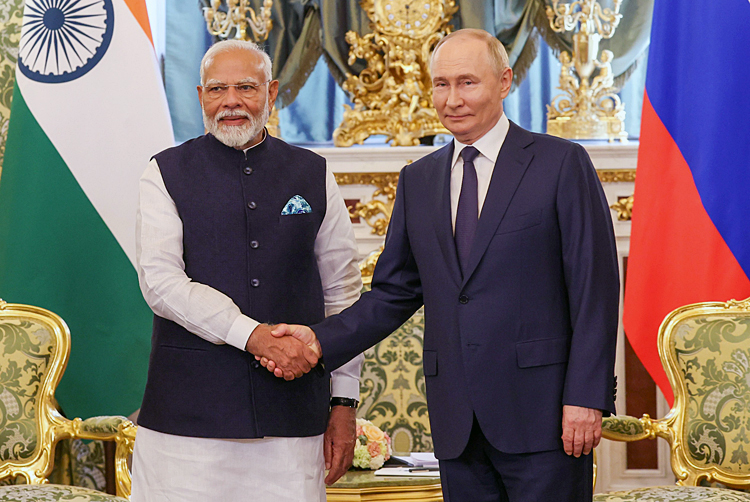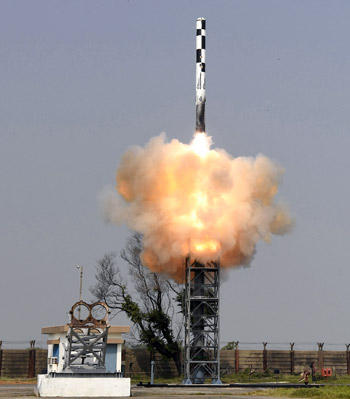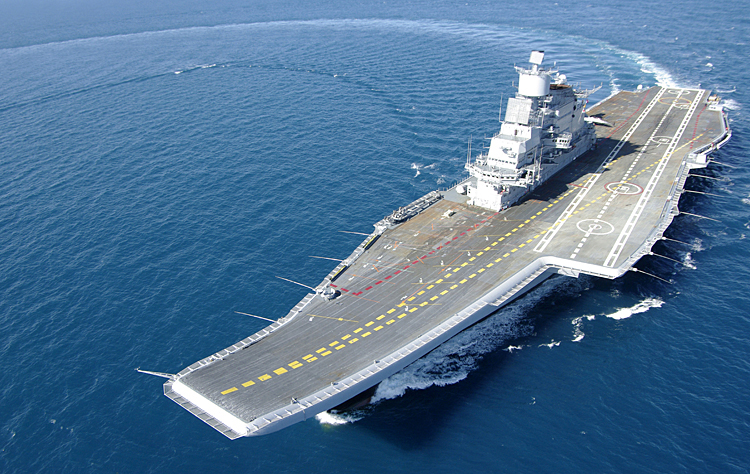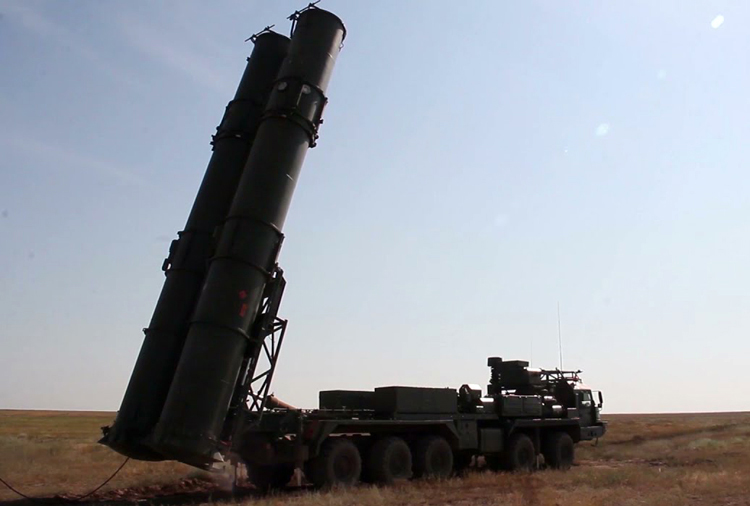INDIAN ARMED FORCES CHIEFS ON OUR RELENTLESS AND FOCUSED PUBLISHING EFFORTS

The insightful articles, inspiring narrations and analytical perspectives presented by the Editorial Team, establish an alluring connect with the reader. My compliments and best wishes to SP Guide Publications.

"Over the past 60 years, the growth of SP Guide Publications has mirrored the rising stature of Indian Navy. Its well-researched and informative magazines on Defence and Aerospace sector have served to shape an educated opinion of our military personnel, policy makers and the public alike. I wish SP's Publication team continued success, fair winds and following seas in all future endeavour!"

Since, its inception in 1964, SP Guide Publications has consistently demonstrated commitment to high-quality journalism in the aerospace and defence sectors, earning a well-deserved reputation as Asia's largest media house in this domain. I wish SP Guide Publications continued success in its pursuit of excellence.
Indo-Russian Joint Defence Ventures
The Indo-Russian bilateral relationship is described as time-tested, with Russia remaining a priority in India's foreign policy, highlighted by the agreement on military technical cooperation for the 2021-2031 decade
 |
The Author is Former Director General of Information Systems and A Special Forces Veteran, Indian Army |

The 22nd India-Russia Annual Summit between Prime Minister Narendra Modi and Russian President Vladimir Putin in Moscow led to the agreement for establishing joint ventures to produce military spare parts and components in India, ensuring the maintenance of Russian-made equipment used by the Indian Armed Forces, which has been an issue of concern because of Russia's involvement in the conflict in Ukraine that began on February, 24, 2022. Looking at the 60-70 per cent of Russian-origin weapon systems of the Indian Armed Forces, such a joint venture to maintain and upgrade them was only possible with Russia.
The 22nd India-Russia Annual Summit led to an agreement for establishing joint ventures to produce military spare parts and components in India, ensuring maintenance of Russian-made equipment used by the Indian Armed Forces.
But this is not all. As importantly, if not more, agreement was also reached to manufacture defence hardware for export under Make in India. This is a very significant development which will not only address India's security challenges but also boost exports. This also should be seen in the backdrop of the success story of the Indo-Russian BrahMos supersonic missile production. Notably, America's Make-in-Japan venture to manufacture Patriot Missiles has reportedly fizzled out because Boeing is unable to provide the required parts. Also, the French company Dassault Aviation is reportedly putting spanners in terms of Transfer of Technology (ToT) for India's upcoming Multi-Role Fighter Aircraft (MFRA) procurement.

Indo-Russian bilateral relationship is time tested. Russia remains a priority in India's foreign policy and the agreement on military technical cooperation for the decade (2021-2031), signed during the inaugural India-Russia 2+2 Dialogue in December 2021 further strengthened this comprehensive partnership. No doubt India is also exploring strengthening defence ties with the US and other Western countries, particularly in critical and emerging technologies; transfer of technology and latest technologies from the West will always remain a question mark looking at the past history and dynamics of geopolitics, whereas, Russia is likely to be more amenable for such collaboration. Current India-Russia collaboration includes the licensed production of T-90 tanks, AK-203 rifles, BrahMos missiles and Su-30 MKI fighter jets, along with the supply of MiG-29 and Kamov helicopters, INS 'Vikramaditya' aircraft carrier, and S-400 missile systems.

An agreement was reached to manufacture defence hardware for export under the 'Make in India' initiative, significantly boosting India's security and defence exports.

According to media reports of July 11, 2024, India and Russia are in talks to jointly produce Su-30 fighter jets for global export. This is being viewed as the next phase of defence partnership between the two countries; joint manufacturing and technology transfer. The agreement between India and Russia already involves the production of 272 x Sukhoi Su-30 MKI jets, a significant number of which were produced at the Hindustan Aeronautics Limited (HAL) plant, which would also be used for repair and maintenance of Russian-origin aircraft from other countries. This will boost the 'Make in India' initiative, as well as defence exports. The HAL plant at Nasik was started with Russian cooperation in 1964. It has been involved in the production and maintenance of MiG-21 and subsequently Sukhoi-30 fighter jets. Currently, the Indian Air Force (IAF) has the highest number of Sukhoi-30 fighter jets. HAL plans to equip the Sukhoi Su-30 MKI fighter jets with the indigenous 'Uttam' AESA radars.
India and Russia are in talks to jointly produce Su-30 fighter jets for global export, viewed as the next phase of their defence partnership.
The scope of India-Russia defence collaboration is enormous, which can span metallurgy, super components, underwater domain awareness, ballistic missile technology, space technology, as also aero-engine technologies. With technology transfer, the demand for Indo-Russian co-produced defence products is likely to be huge globally, especially in far eastern countries, Africa and South America, among others. In addition to the BrahMos missile, many countries reportedly have already shown interest in joint Indo-Russian products.

In a recent development, Russia has proposed joint production of the S-500 air defence missile system in India, according to media reports. The S-500 air defence system is designed to intercept all types of modern hypersonic weapons and has been successfully tested for this capability. It is planned to be deployed alongside the S-550 missile system as part of Russia's air defence network. The S-500 system entered service in the Russian forces in 2021. Russia claims that the S-500 is capable of intercepting all types of modern hypersonic weapons and has conducted successful tests to demonstrate this capability.
Russia has proposed the joint production of the S-500 air defence missile system in India, a system designed to intercept modern hypersonic weapons

India has an immediate need of air defence systems against potential hypersonic missile threat, but its decision to accept the Russian offer to co-produce the S-500 in India would need to be weighed against the US-led sanction regime of the West. Already the US has sanctioned two Indian national and three companies for collaborating with Russia. Given the urgent requirement of hypersonic defence and keeping 'India First', New Delhi needs to tell the US to 'get off the high horse' by signaling that sanctions imposed on India can result in proportional reduction in America's access to Indian markets.





